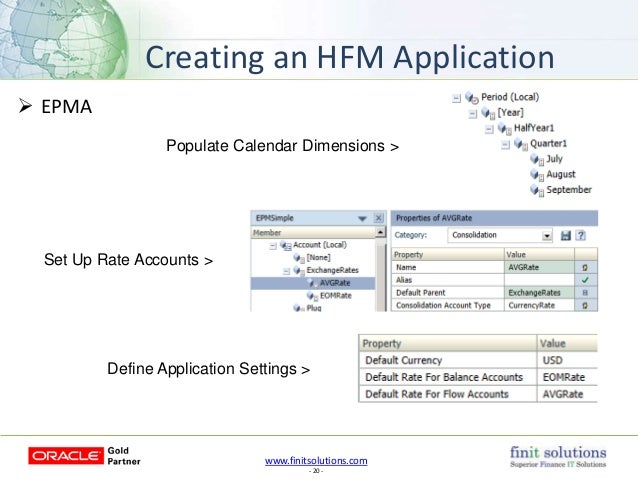
Hyperion Epma File Generator
Do you have multiple applications with similar dimensions? Is the maintenance of multiple metadata ETL processes for these same dimensions driving you crazy? Do you wish there was an easy way to share dimensions between similar applications? If so, could be the solution you’re looking for!
Let’s review an example. Consider This The two applications above can be Essbase, Planning, Hyperion Financial Management (HFM), Hyperion Profitability and Cost Management (HPCM), or any combination of these four application types. In this case, let’s assume we have a Hyperion Planning application containing current financial data and an Essbase cube serves as the historical data archive. What do these applications have in common? Since the Essbase cube is simply an archive, it shares many of the same dimensions with the main application. The only major difference between the applications is the Years dimension.
The two applications above can be Essbase, Planning, Hyperion Financial. In the data warehouse, flat files built with the EPMA file generator, or through. Learn how to import HFM metadata files (.app format) into Excel, where the. The Hyperion Financial Management (HFM) Metadata Utility is a free utility that. The utility checks for this during export and will generate an error message if this.
Our main application only has limited historical data and a few forward looking years, while the archive application houses all historical data. As you can see, our applications share FIVE out of six dimensions. Let’s look at how we would build these applications using the classic approach. Building the Applications – Classic Approach If we were to build these applications using a common development approach, how would we approach it? First, we would define our dimensions within a or flat file. After we build our dimensions, we would create an ETL process to load the metadata to our application.
The ETL Process can be a load rule, the outline load utility, or ODI, depending on the application we are building. As it pertains to the Years dimension, we would build our processes to filter on years such that only the appropriate years are loaded into each respective application.
 Jason has enlisted some of the largest names in instrumental guitar music and has as many as three guitarists per track trading off riveting performances.Including performances by Joe Satriani, Steve Vai, Michael Lee Firkins, Marty Friedman and Greg Howe.
Jason has enlisted some of the largest names in instrumental guitar music and has as many as three guitarists per track trading off riveting performances.Including performances by Joe Satriani, Steve Vai, Michael Lee Firkins, Marty Friedman and Greg Howe.
The Metadata Nightmare As you can see from the diagram above, we would have had to build an ETL Process for EACH application. If both applications are the same type (Essbase, Planning, HFM, or HPCM), then some ETL programming can be reused. However, if we have a Planning Application built for forecasting the future years, while our archive application is an Essbase Cube (just like in our example), we cannot reuse any ETL processing. Since Essbase and Planning metadata is loaded through different mechanisms, we would need SEPARATE processes to create our outlines. This causes scattered maintenance by requiring us to manage all three layers of our application separately. As dimensions change, we must change our source, EACH of our ETL processes, and any application specific items. To make matters worse, different layers of the application tend to be managed by different administrators, thereby necessitating a constant coordination with multiple people to ensure that the updates happen where required.

Pokemon crystal walkthrough pdf download. Because of the amount of maintenance needed on all aspects of the application, the solution does not scale well. As we add more applications, we drastically increase the maintenance complexity even further. How Much is Too Much? We just walked through a scenario in which we built and maintained only two applications. We defined our dimensions once as well as developed the applications and an ETL process for each one.